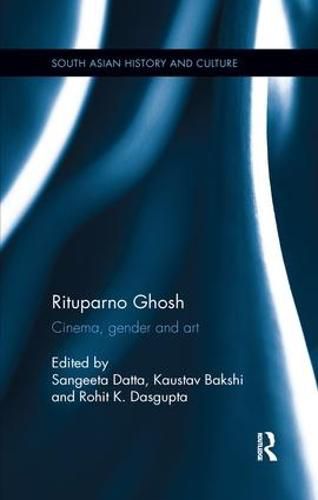Readings Newsletter
Become a Readings Member to make your shopping experience even easier.
Sign in or sign up for free!
You’re not far away from qualifying for FREE standard shipping within Australia
You’ve qualified for FREE standard shipping within Australia
The cart is loading…






An iconic filmmaker and inheritor of the legendary Satyajit Ray’s legacy, Rituparno Ghosh was one of the finest auteurs to emerge out of contemporary Bengal. His films, though rooted firmly in middle-class values, desires and aspirations, are highly critical of hetero-patriarchal power structures. From the very outset, Ghosh displayed a strong feminist sensibility which later evolved into radical queer politics.
This volume analyses his films, his craft, his stardom and his contribution to sexual identity politics. In this first scholarly study undertaken on Rituparno Ghosh, the essays discuss the cultural import of his work within the dynamics of a rapidly evolving film industry in Bengal and more largely the cinematic landscape of India. The anthology also contains a conversation section (interviews with the filmmaker and with industry cast and crew) drawing a critical and personal portrait of this remarkable filmmaker.
$9.00 standard shipping within Australia
FREE standard shipping within Australia for orders over $100.00
Express & International shipping calculated at checkout
An iconic filmmaker and inheritor of the legendary Satyajit Ray’s legacy, Rituparno Ghosh was one of the finest auteurs to emerge out of contemporary Bengal. His films, though rooted firmly in middle-class values, desires and aspirations, are highly critical of hetero-patriarchal power structures. From the very outset, Ghosh displayed a strong feminist sensibility which later evolved into radical queer politics.
This volume analyses his films, his craft, his stardom and his contribution to sexual identity politics. In this first scholarly study undertaken on Rituparno Ghosh, the essays discuss the cultural import of his work within the dynamics of a rapidly evolving film industry in Bengal and more largely the cinematic landscape of India. The anthology also contains a conversation section (interviews with the filmmaker and with industry cast and crew) drawing a critical and personal portrait of this remarkable filmmaker.